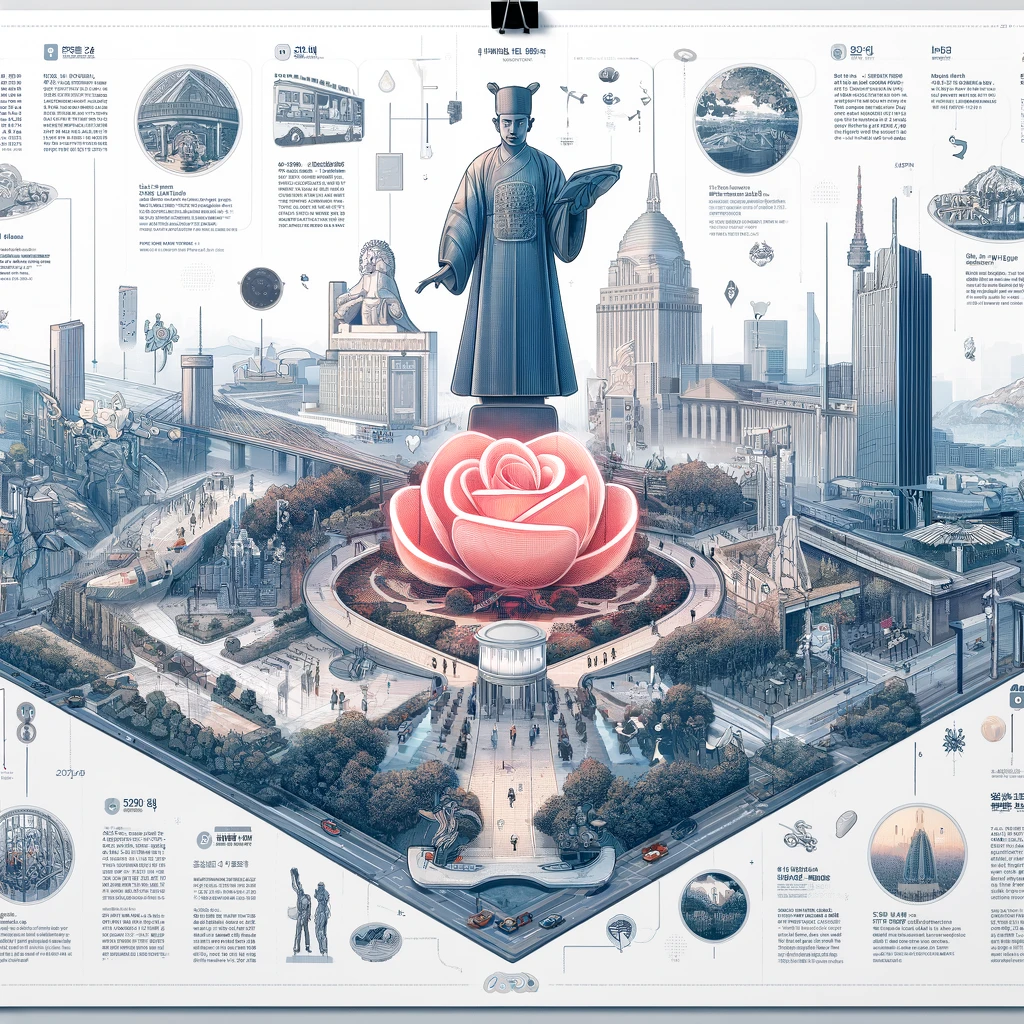목차
Seoul’s Public Art and Sculptures: An Outdoor Gallery Experience
Introduction
Seoul, a city where ancient history and cutting-edge modernity coexist seamlessly, offers an extensive array of public art and sculptures that transform the cityscape into a vibrant outdoor gallery. From historical monuments to contemporary installations, Seoul’s public art not only beautifies the city but also encourages public interaction and cultural discourse. This exploration delves into the variety, significance, and experiences offered by Seoul’s public sculptures and art pieces.

Historical Context and Evolution
The tradition of public art in Seoul has roots deep in Korea’s history, with ancient statues and memorial stones erected in honor of notable historical figures and events. Over the centuries, the focus shifted towards more contemporary expressions, especially after the Korean War, as the city sought ways to rebuild and redefine its identity.
In the 1980s and 1990s, Seoul’s metropolitan government began to integrate art into the urban environment as a strategy to enhance the quality of life and make art accessible to all citizens. This initiative gained further momentum in the 2000s with the city’s transformation into a global cultural hub.
Major Public Artworks and Sculptures
Cheonggyecheon Stream Sculptures: Along this revitalized urban park, a series of sculptures and installations interact with the flowing water, each piece telling a part of Seoul’s history and showcasing contemporary artistic expressions.
Ihwa Mural Village Art: Once a shanty town, Ihwa village has been transformed into a vibrant art district, famous for its murals and sculptures that reflect both traditional Korean aesthetics and modern themes. The murals, in particular, have become iconic, creating a lively atmosphere that attracts tourists and locals alike.
Hongdae Street Art: In the youth-centric area of Hongdae, street art and sculptures capture the dynamic and rebellious spirit of Seoul’s young artists. This area serves as a canvas for both established and emerging artists, showcasing experimental and avant-garde styles.
Banpo Bridge Rainbow Fountain: Combining art with engineering, this installation features the world’s longest bridge fountain, with water jets and LED lights that create mesmerizing visual effects over the Han River, symbolizing Seoul’s innovative spirit.
The Statues of King Sejong and Admiral Yi Sun-Shin at Gwanghwamun Square: These statues are significant not only for their artistic value but also as cultural symbols commemorating key historical figures who have shaped Korean history.
Dongdaemun Design Plaza (DDP) LED Rose Garden: Featuring over 20,000 LED roses that light up at night, this installation offers a futuristic interpretation of a garden and has become a favorite spot for both photography and leisure.
Themes and Inspirations
The themes of Seoul’s public art are as diverse as the city itself, ranging from historical reverence and cultural identity to social issues and futuristic visions. Artists draw inspiration from Seoul’s rich history, its rapid modernization, and the vibrant daily life of its citizens. Moreover, many installations incorporate interactive elements or digital technology, reflecting Seoul’s status as a tech-forward city.
Impact on Community and Tourism
Public art in Seoul plays a pivotal role in community building and urban beautification. These artworks provide communal spaces that encourage social interaction and cultural activities. For tourists, these art installations offer insightful glimpses into Seoul’s cultural landscape, making them popular destinations within the city’s tourism circuit.
Moreover, events like the Seoul Lantern Festival and the Seoul Biennale of Architecture and Urbanism highlight how the city uses public spaces to showcase art, thus fostering a deeper appreciation and understanding among both residents and visitors.
Conclusion
Seoul’s outdoor gallery of public art and sculptures is a testament to the city’s ongoing commitment to cultural enrichment and urban aesthetics. Each piece tells a story, whether echoing the past or whispering of the future, and collectively, they enrich the urban experience, making art an accessible part of everyday life in Seoul. As the city continues to evolve, so too will its public art, promising ever more innovative and engaging developments in this vibrant metropolis.
Go Blog Home
